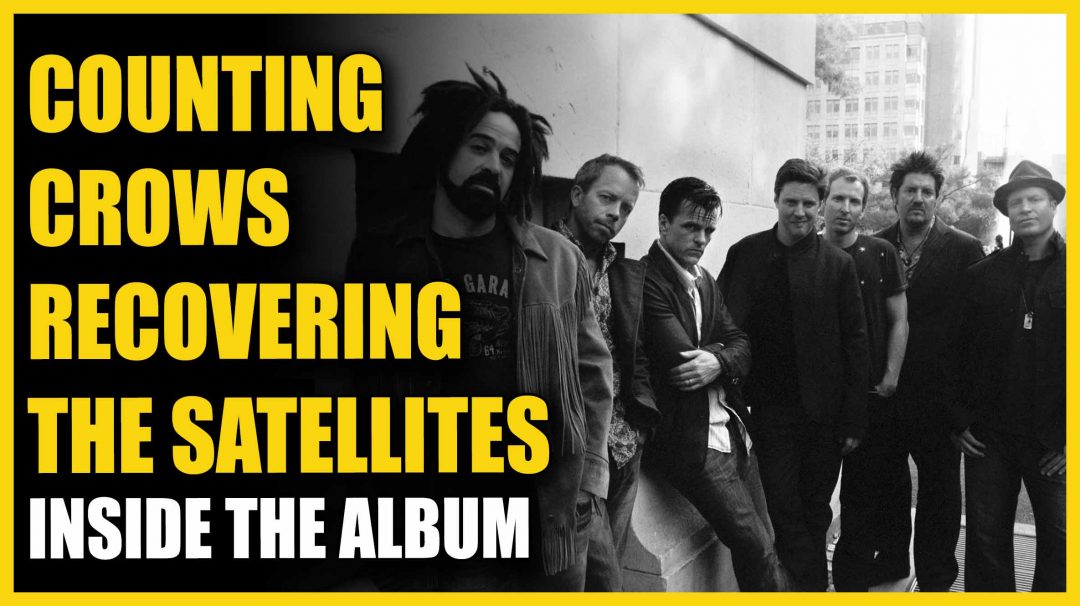I recently sat down with my good friend Bradley Cook and had a rather wonderful chat! A couple weeks ago, we talked about his time engineering Foo Fighters’ “Everlong.” This time around we got to talk about his work on Recovering the Satellites by Counting Crows.
If you’re new to Bradley Cook’s work, he is an engineer who’s done albums with countless amazing artists, including Foo Fighters, Queens of the Stone Age, Counting Crows, Isaac Hayes, Ben Harper, Fishbone, and Everclear.
He calls Barefoot Recording a home away from home, having worked there on and off since the studio’s renovation and rebranding in 2000. Bradley assisted Eric Valentine on projects over the years, while also venturing off on major projects of his own at various studios—notably Grandmaster Recorders, which was unfortunately sold for redevelopment nearly two years ago. Bradley brings 30 years’ experience as an audio engineer to the table, and his résumé speaks for itself!
You can learn more about Bradley Cook’s amazing career here: Bradley Cook: Recording Engineer (Foo Fighters, QOTSA)
Enjoy the whole conversation below:
video here
Recovering the Satellites was a stylistic contrast to the previous August and Everything After.
Counting Crows’ debut album, August, was essentially a pop record in many ways, produced in a manner where nearly every track felt radio-ready. The project was done with T-Bone Burnett and charted well, reaching #4 on the Billboard 200. The lead single “Mr. Jones” is a remarkably memorable hit, making it as high as #2 on the Top 40 charts.
Recovering the Satellites is a distinctly darker record than the debut it followed. It’s simultaneously very much an up-tempo “rock” record, but it’s tinged with somberness at the same time. It was released three years later and after two years of extensive worldwide touring, after which frontman Adam Durtiz had seemingly undergone drastic personal changes.
The band explored a heavier sound on the record, and vocalist Durtiz’s lyrics became more introspective and personal, due to his newfound fame and the isolation that comes with it.
The album was a commercial success, though it was met with mixed reviews from critics.
Allmusic’s Stephen Thomas Erlewine gave the album a positive 4/5 stars. He praised Recovering the Satellites as a strong response to their debut, also calling the songs “slightly more somber” than those on August.
Andy Gill from The Independent was much more critical of the album, naming Duritz’s song-writing as “self-pity[ing]” and calling the out the band for being a hodgepodge of their influences. He did, however, speak highly of producer Gil Norton’s work on the album. Interestingly, Bradley Cook would work with Gil Norton again on a Foo Fighters project a year after Recovering the Satellites.
Parts of Recovering the Satellites were recorded at the legendary Sound Factory in Hollywood.
Sound Factory is yet another classic Los Angeles studio with a rich history and iconic status. The facility started in the 1960s, during which time the building on Selma Ave. in Hollywood was home to Moonglow Records and Recording Studio. By the late ’60s, former RCA staff engineer and Warner/Reprise staff producer, David Hassinger, decided to go into business on his own. He bought the Moonglow Records building and started the Sound Factory!
The Sound Factory became one of the busiest studios in Hollywood. Hassinger’s success showed that the demand for studio time was more than the one room could handle, so he opened a second studio in West Hollywood and called it The Sound Factory West. After some time, Hassinger realized that operating two studios in different locations was much more difficult than he anticipated, so he negotiated to buy property adjacent to the Selma Avenue location. After a period of complete renovation, the property (which was a restaurant!) was converted into a new studio! Hassinger closed Sound Factory West and opened studio “B” to clients.
For close to a decade after its opening, The Sound Factory was home to many iconic artists like Jackson Browne, Linda Ronstadt, Seals & Crofts, Warren Zevon, Little Feat, and others. In 1982, Sunset Sound took over Sound Factory and continued its history recording the top artists from 1980 until now. As of 2017, Sound Factory has reopened to continue its legacy as an A-list Hollywood recording studio.
Counting Crows and Bradley Cook contributed to the studio’s history with the incredible Recovering the Satellites.
